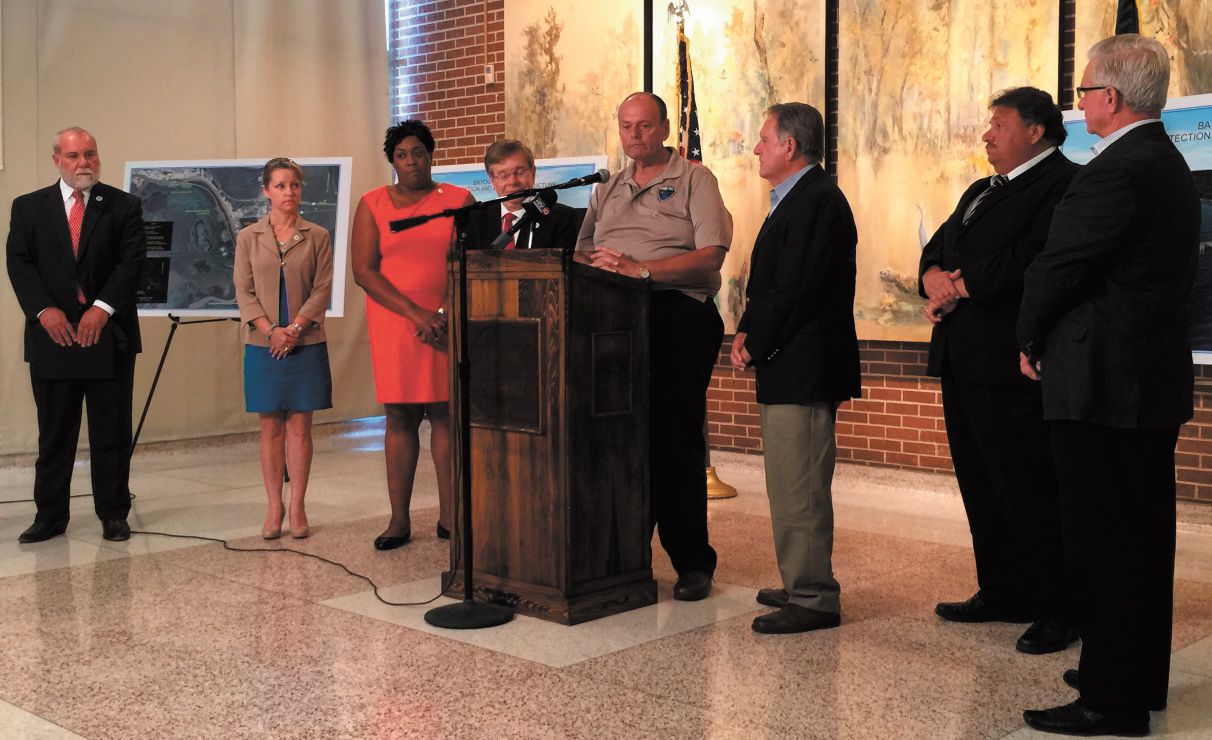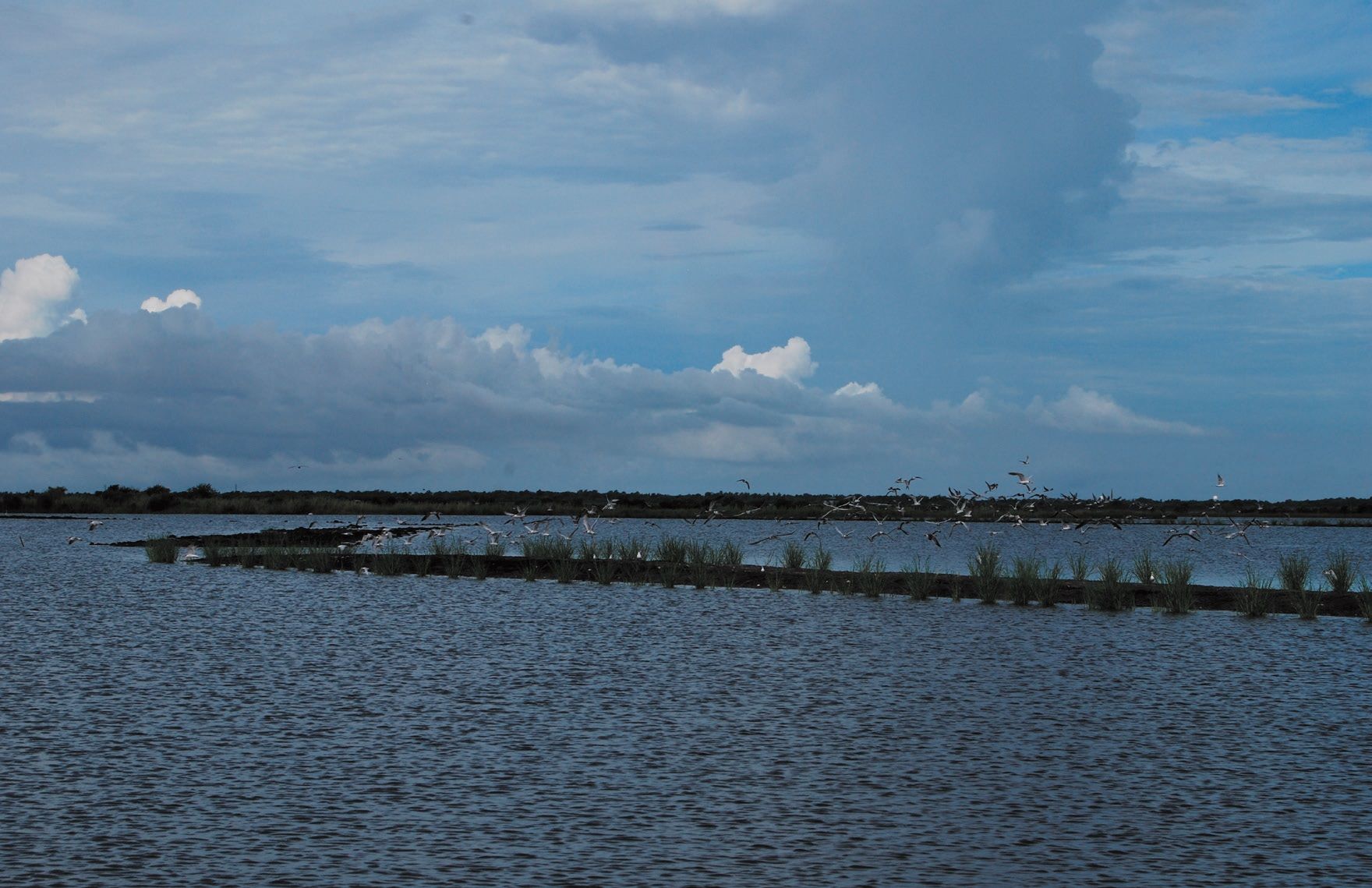
$107 million flood structure OK’ed
September 9, 2015Retired teacher seeking council seat
September 9, 2015Lafourche Parish officials are partnering with the waterfowl conservation organization Ducks Unlimited to create erosion-control barriers in Bayou L’Ours, which will serve double-duty as a manmade habitat for migratory birds in the southern reaches of the parish.
The barriers, called marsh terraces, are being built about five miles southeast of Cut Off in section as money becomes available, said Lafourche Parish Administrator Archie Chaisson. The project will fill 220 acres of broken marshland with 24,000 linear feet of marsh terraces.
Essentially, conservationists create ridges 1,000 feet long, 40 feet wide at the base and 10 feet wide at the top in areas of broken marsh.
The surface of each terrace protrudes about two feet above the water’s surface. Conservationists then plant native grasses atop the mounds to reduce erosion from wave action.
Each terrace is V-shaped so that no matter the wind direction there is calm water on the downwind side of the mound.
The terraces are arraigned in an alternating pattern to maximize their ability to reduce wave action.
According to Windell Curole, general manager of the South Lafourche Levee District, the terraces stop erosion by dissipating the kinetic energy carried by waves that travel over open water.
Those waves get bigger and stronger the more open water they have to cross until they hit something. In areas of broken marsh, the expanses of water have and continue to grow while areas of land only shrink, so in many places wave lap at the bases of levees.
“In our situation, we used to have marsh all around the levee system,” Curole said. “Throughout the years we’ve lost a lot of marsh and so we get more wave action up against the levee and anything we can do to reduce the wave action reduces the erosive forces up against the levee.”
Marsh terraces are commonly built in the western coastal parishes, Chaisson said. Ducks Unlimited has built many of them there and have witnessed unexpectedly positive results.
According to the Ducks Unlimited website, when Hurricane Rita struck the area large expanses of marsh were completely destroyed. Terraces built in the Cameron Creole Watershed in 2003 actually trapped much of the soil and vegetation from those marshes and new land was created.
The Times visited the terraces in Bayou L’Ours via airboat with Chaisson. While there, Chaisson kept an eye on the range finder and pointed out an area of water where the depth was only a foot.
“That wasn’t there before,” he said. “You can see the grasses growing there.”
The marsh terraces in Bayou L’Ours have not been tested by a hurricane yet, so it is unknown how well they will protect the levee, Chaisson said.
So far, Lafourche Parish has put up $250,000 for the project, Chaisson said. It is matched with cash from the Deepwater Horizon Settlement through the North American Wetlands Conservation Act.
According to the Deepwater Horizon Project Tracker website, the total projected cost of the project is $2.9 million. BP is putting up $973,096 and the rest has to be matched.
The project is being built in five sections separated by existing ridgelines. Work on a second section is now underway and another small section is done, but the remaining three sections represent the bulk of the project.









